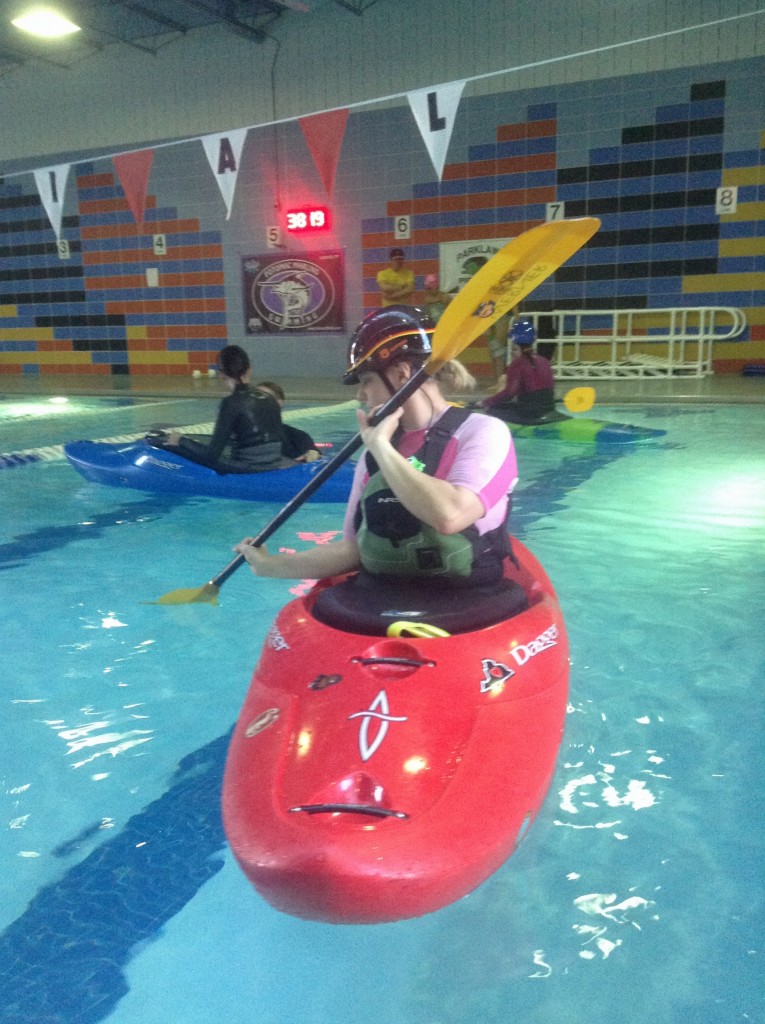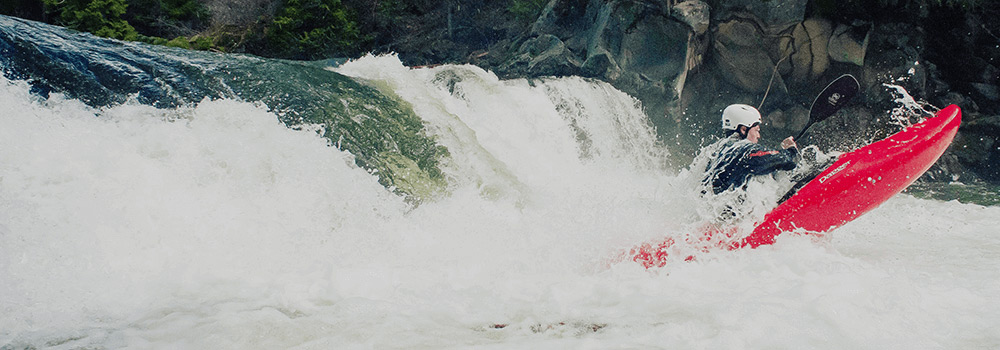JUMPING THE MENTAL HURDLE
Learning the Eskimo roll can be more of a mental challenge than a physical one, because it involves staying calm while performing a maneuver below the surface of the water–an environment in which we humans can’t breathe.
But don’t let that inconvenient fact keep you from mastering the roll. Here’s a secret: All of us had to face down our fears when we first learned this invaluable subsurface technique, and you can too. It’s best to learn from a qualified instructor, who can guide you through a progression of skills and confidence-building drills at a pace that’s right for you.
Understanding the rolling motion before you’re upside down is key to calming your nerves. One way to drive that discipline into your noggin without getting wet is Ben Lawry’s Dry Land Rolling instruction, in which Lawry breaks down paddle placement and body mechanics, actually turning you upside down in your boat while out of the water, allowing you to understand and visualize the technique. “If folks know where they’re going before they get in the water, then you’re just adding water,” says Lawry, a multi-discipline paddling instructor from Chester, England, living in South Carolina
Dry land training is a great start, but eventually you’re going to have to face the bubbles. A swimming pool is the best place to get comfortable (check with your local paddling shop or club for pool practice sessions). Many paddling courses breeze through the wet exit as if it were elementary, which, when our fight-or-flight response kicks in, it is: Just give your sprayskirt’s release loop a tug and push away from the hull. But practicing the wet exit over and over in a pool is the key to calm. Hold your breath and look around the pool for a while before you pull the skirt (bring swim goggles).
 Now try it the other way around. “One of the coolest teaching techniques I’ve ever seen was [Idaho outfitter] Tom Long having his students do wet entries,” says Risa Shimoda, a longtime member of the U.S. Freestyle Kayak team. Get back in the boat while it’s upside down in the pool. Crawl in, extend your legs and pull yourself into the seat. Make it a goal to get your skirt back on at least once per pool session.
Now try it the other way around. “One of the coolest teaching techniques I’ve ever seen was [Idaho outfitter] Tom Long having his students do wet entries,” says Risa Shimoda, a longtime member of the U.S. Freestyle Kayak team. Get back in the boat while it’s upside down in the pool. Crawl in, extend your legs and pull yourself into the seat. Make it a goal to get your skirt back on at least once per pool session.
What about that boat you’re using to roll? You’ll learn more easily and be more confident if your boat is outfitted correctly (Hint: Google ‘kayak outfitting tips’). “Ideally, you’ll fit in there like a sock,” Shimoda says. The more contact your hips, knees and feet have with the cockpit, the easier it will be to roll. A snug fit means the boat reacts to your every move instead of your hips sliding out. And think about hull profile too. A rounded, low-profile hull is the way to go. Classic whitewater boats like the Perception Pirouette S and British-style sea kayaks without rudders are good choices for learning. If you feel good in the boat, you’re going to roll well in the boat.
Getting past the mental hang-ups of rolling might be the sport’s single greatest obstacle for beginners. But once you understand the technique, mental blocks are the same in boating as in life. Sometimes you just need to let go. “Relax, give yourself an extra second and know you can hit that roll,” Shimoda says.
CANOE & KAYAK – Joe Carberry


